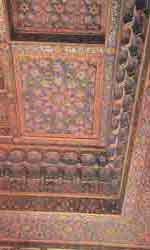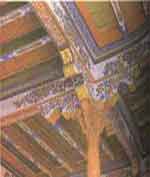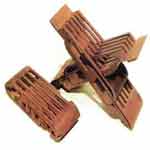Holding a prominent place in decor, carved wood is widely used in making
articles of everyday practice: rests for suitcases and which blanks are laid
together, small cupboards, caskets, pencil-boxes, smart low tables-khontakhta,
national musical instruments, and many-sided decorative night-tables.
For all the resplendence and variety of patterns used in ornamental
plane-carving in relief, three basic groups of compositional styles can be
distinguished: bagdadi, islimi and pargori.
The bagdadi style of carving is known for its comparatively simple
geometrical figuration. Formally varieties of bagdadi style were widely used
in decorating object of everyday practice and adornments.
Countless, and sometimes very complex, vegetal and vegetal-geometrical
variations of objects, which are widely applied in islimi-style classical
ornamentation, known almost throughout the middle and near east since olden
times-form the basis of islimi style carving. This ornamentation has strict
principles of decorative forms and compositions. It made up of stalks
rhythmically climbing up, strewn with buds, leaves and flowers, interlaced
in fantastic medallions. The islimi-style ornaments are the method of plane
-carving in relief with a chosen setting, and often with a richly decorated
relief and background.
Pargori-style carving, which is based on a geometrical net made up of
circles, squares and triangles, is a particular variety of fine carving
against a setting.
Wood of the finest varieties of trees is used for wood carving in
Uzbekistan: walnut, plane, karagach (a kind of elm), juniper, mulberry,
poplar and apricot-trees.








